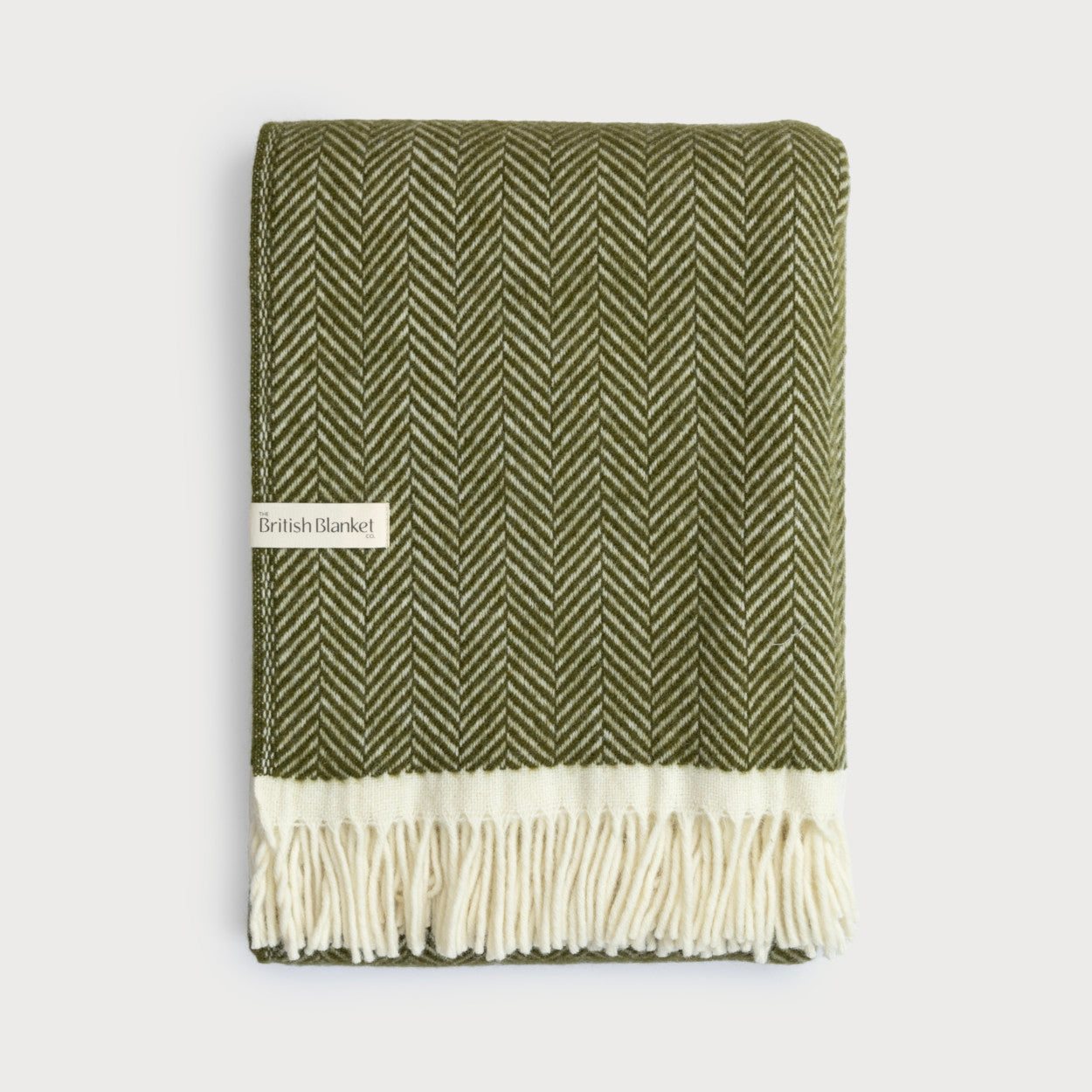Why Wool?

BEAUTIFUL NATURAL WOOL
What is wool?
Wool is a natural keratin fibre made by sheep, with a brand-new fleece grown every year. Sheep are sheared annually to remove their winter coats and keep them cool and comfortable in summer. Luckily for us, these warm fleeces can be spun into yarn and woven into cosy blankets and scarves.
Although people having been using wool since the Stone Age, scientists have yet to produce a fibre that matches the unique natural properties of wool. If they could, it would be hailed as a wonder of technology!
FROM FLEECE TO BLANKET
How are wool blankets made?
The fleece is washed with soap and water, then dyed. The dye may be a single colour or a ‘melange’ blended from different shades. Fibres are carded to smooth them in the same direction, then spun into yarn.
The weaving process starts with aligning up to 2,000 yarn threads onto a beam to make the warp. We use traditional looms that carry the weft threads through the warp, creating the pattern. Next the cloth is washed, brushed and fringed, before a final quality control check when it is cut and labelled, ready for its new home.
ORIGINS OF WOOL
Where does our wool come from?
We source most of the wool for our blankets from New Zealand and South Africa. They produce the best quality material for blankets because they specifically breed sheep for the softness and fineness of their fleece. They also have very high animal welfare standards, so the sheep roam freely and the wool is mulesing-free.
Our 100% British Wool collection uses wool sourced exclusively from UK farms. This range of blankets and throws uses fibre from Suffolk and Romney sheep, traditional breeds that are prized for the softness of their wool. We are proud to have achieved a license from British Wool which guarantees the quality and origin of all the wool in this collection with traceability back to British farms.

WARM AND PRACTICAL
What are the benefits of wool?
Wool fabrics are highly breathable, thanks to the crimped structure of the fibres. Woven blankets trap pockets of air, keeping you warm. If you feel too hot, the material allows moisture to evaporate, helping you regulate a comfortable body temperature, especially at night.
Wool is long-lasting and practical, as it is naturally odour resistant and stays fresh longer than other materials. Your blanket can be at the heart of all your cosy activities at home, from snuggling on the sofa, to breakfast in bed and summer picnics.

TYPES OF WOOL
Wool or merino lambswool?
We use three different types of wool: pure sheep’s wool, lambswool and merino lambswool. Pure sheep’s wool is sheared from sheep of any breed or age. Lambswool comes from the first shearing of a lamb, so it is finer and softer. Merino lambswool comes specifically from the merino breed of sheep, which produces especially fine, long and soft fibres.
Whichever you choose, you’ll experience the warmth and cosiness of beautiful natural wool. The British Blanket Company only uses pure new wool to make the best quality blankets - we don’t use recycled wool, which has shorter fibres and isn’t such good quality. Read more about pure wool vs merino here.
SUSTAINABLE AND ECO-FRIENDLY
Why is wool good for the environment?
Synthetic fabrics are man-made plastics that start as petrochemicals and fossil fuels. By contrast, a sheep simply needs grass and drinking water to naturally grow their new fleece each year. Wool also has advantages over cotton, which takes lots of water and chemical fertilisers to produce.
At the end of its life, wool fabric can be recycled and re-spun back into yarn. Even if it does reach landfill, it biodegrades completely in 3-4 months and releases beneficial nutrients into the soil. Synthetic fabrics take decades to break down, creating microplastics that wash into rivers and oceans.














